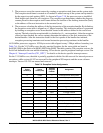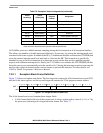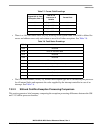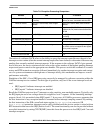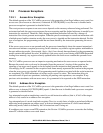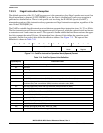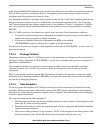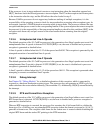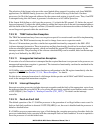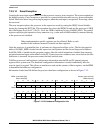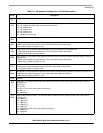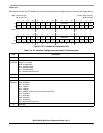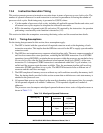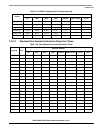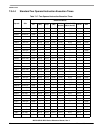
ColdFire Core
MCF51QE128 MCU Series Reference Manual, Rev. 3
Freescale Semiconductor 163
The selection of the format value provides some limited debug support for porting code from M68000
applications. On M68000 family processors, the SR was located at the top of the stack. On those
processors, bit 30 of the longword addressed by the system stack pointer is typically zero. Thus, if an RTE
is attempted using this old format, it generates a format error on a ColdFire processor.
If the format field defines a valid type, the processor: (1) reloads the SR operand, (2) fetches the second
longword operand, (3) adjusts the stack pointer by adding the format value to the auto-incremented address
after the fetch of the first longword, and then (4) transfers control to the instruction address defined by the
second longword operand within the stack frame.
7.3.3.10 TRAP Instruction Exception
The TRAP #n instruction always forces an exception as part of its execution and is useful for implementing
system calls. The TRAP instruction may be used to change from user to supervisor mode.
This set of 16 instructions provides a similar but expanded functionality compared to the S08’s SWI
(software interrupt) instruction. These instructions and their functionality should not be confused with the
software-scheduled interrupt requests, which are handled like normal I/O interrupt requests by the
interrupt controller. The processing of the software-scheduled IRQs can be masked, based on the interrupt
priority level defined by the SR[I] field.
7.3.3.11 Unsupported Instruction Exception
If execution of a valid instruction is attempted but the required hardware is not present in the processor, an
unsupported instruction exception is generated. The instruction functionality can then be emulated in the
exception handler, if desired.
All ColdFire cores record the processor hardware configuration in the D0 register immediately after the
negation of RESET. See Section 7.3.3.14, “Reset Exception,” for details.
For this device, attempted execution of valid integer divide opcodes and all MAC and EMAC instructions
result in the unsupported instruction exception.
7.3.3.12 Interrupt Exception
Interrupt exception processing includes interrupt recognition and the fetch of the appropriate vector from
the interrupt controller using an IACK cycle or using the previously-supplied vector number, under control
of CPUCR[IAE]. See Chapter 8, “Interrupt Controller (CF1_INTC),” for details on the interrupt
controller.
7.3.3.13 Fault-on-Fault Halt
The default operation of the V1 ColdFire processor is the generation of an illegal address reset event if a
fault-on-fault halt condition is detected. If CPUCR[ARD] is set, the reset is disabled and the processor is
halted as detailed below.
If a ColdFire processor encounters any type of fault during the exception processing of another fault, the
processor immediately halts execution with the catastrophic fault-on-fault condition. A reset is required to
force the processor to exit this halted state.



